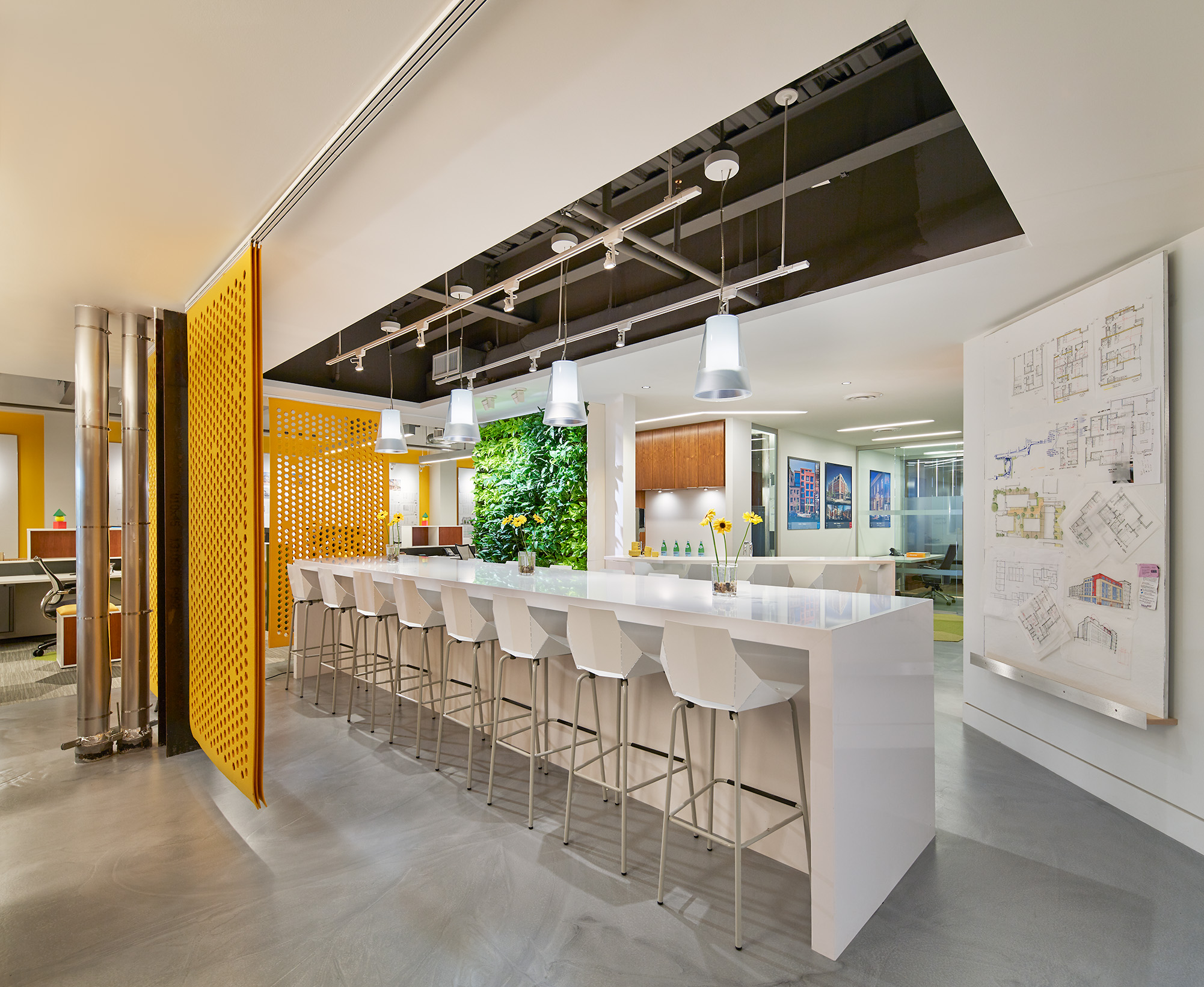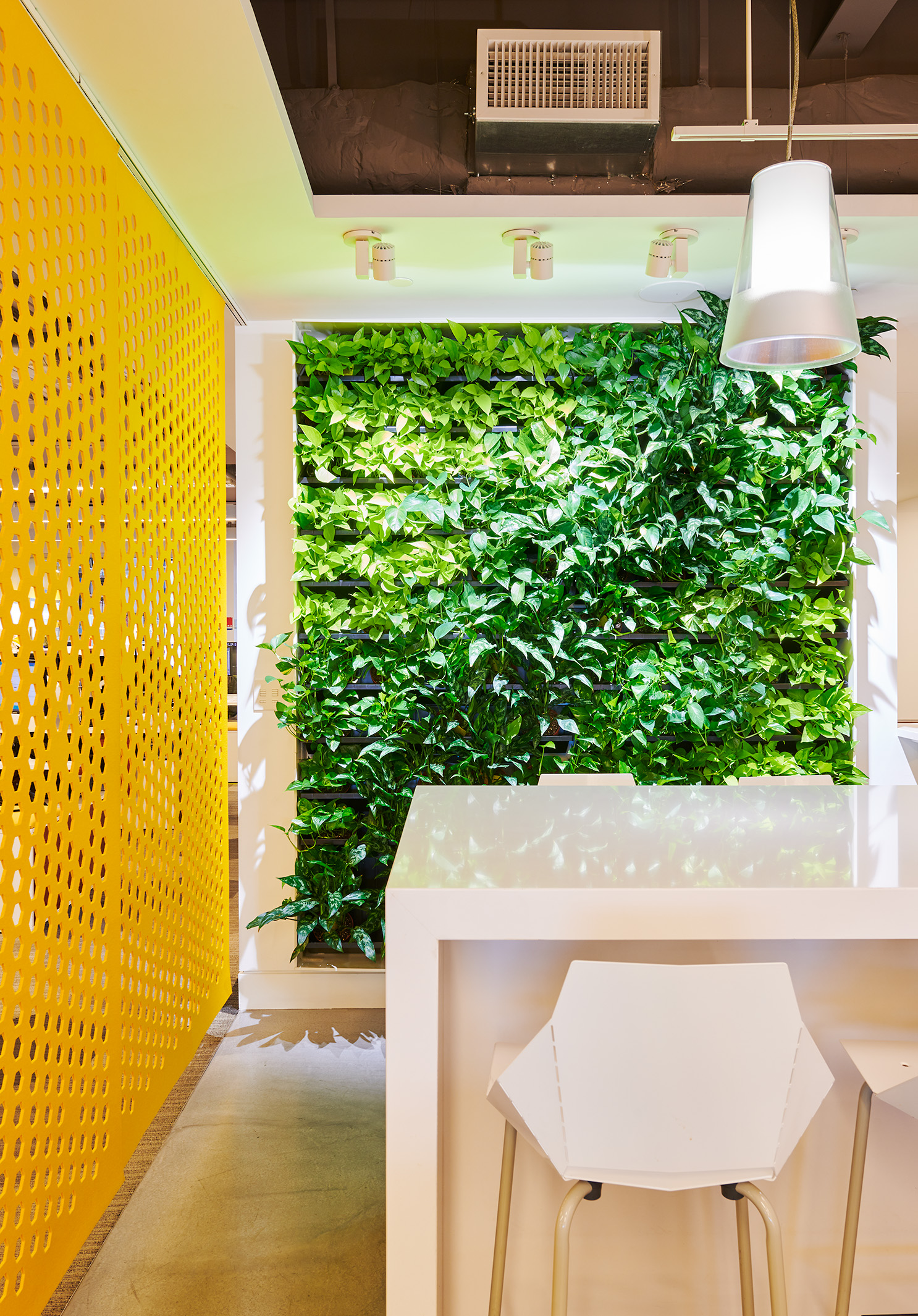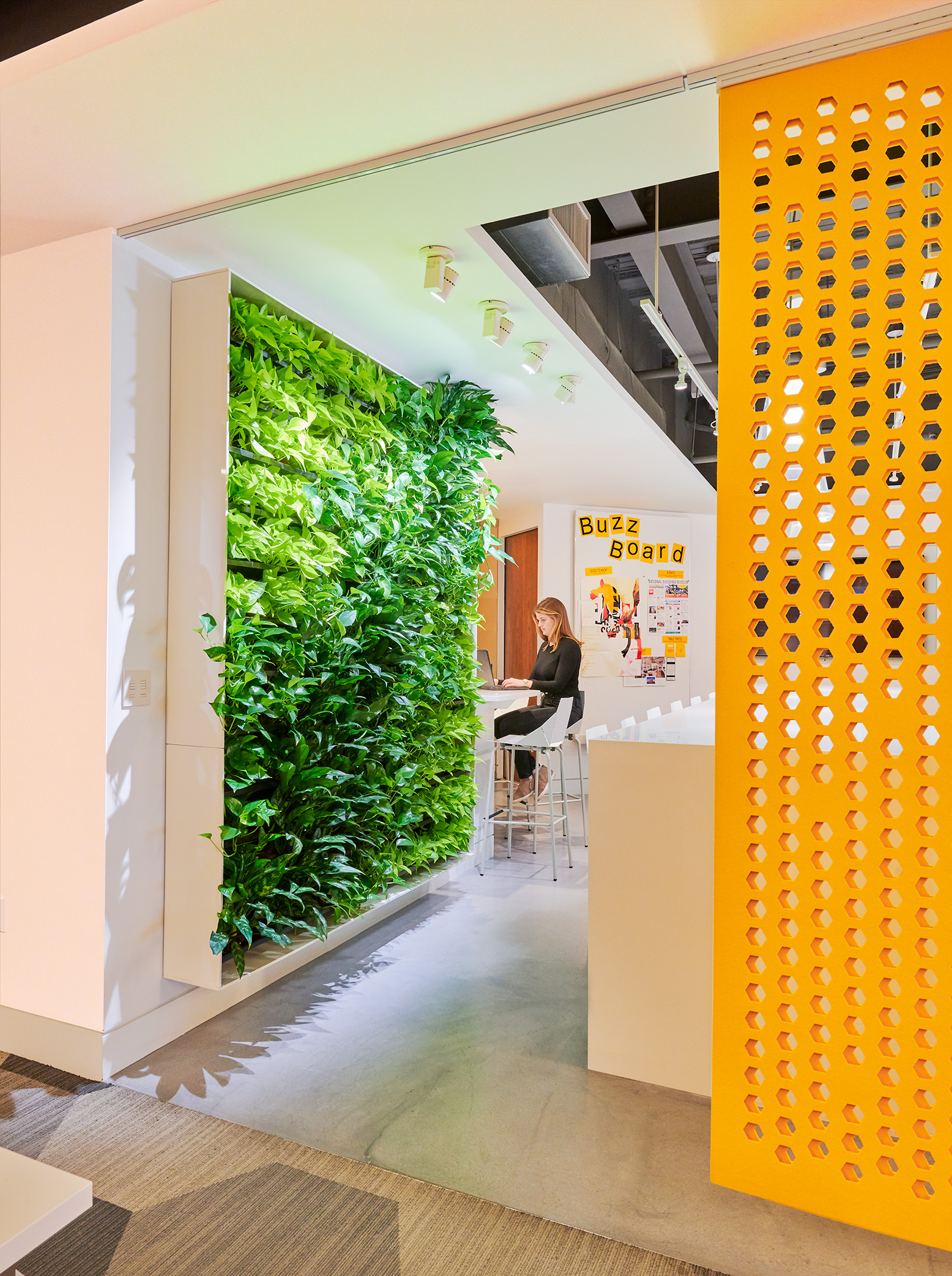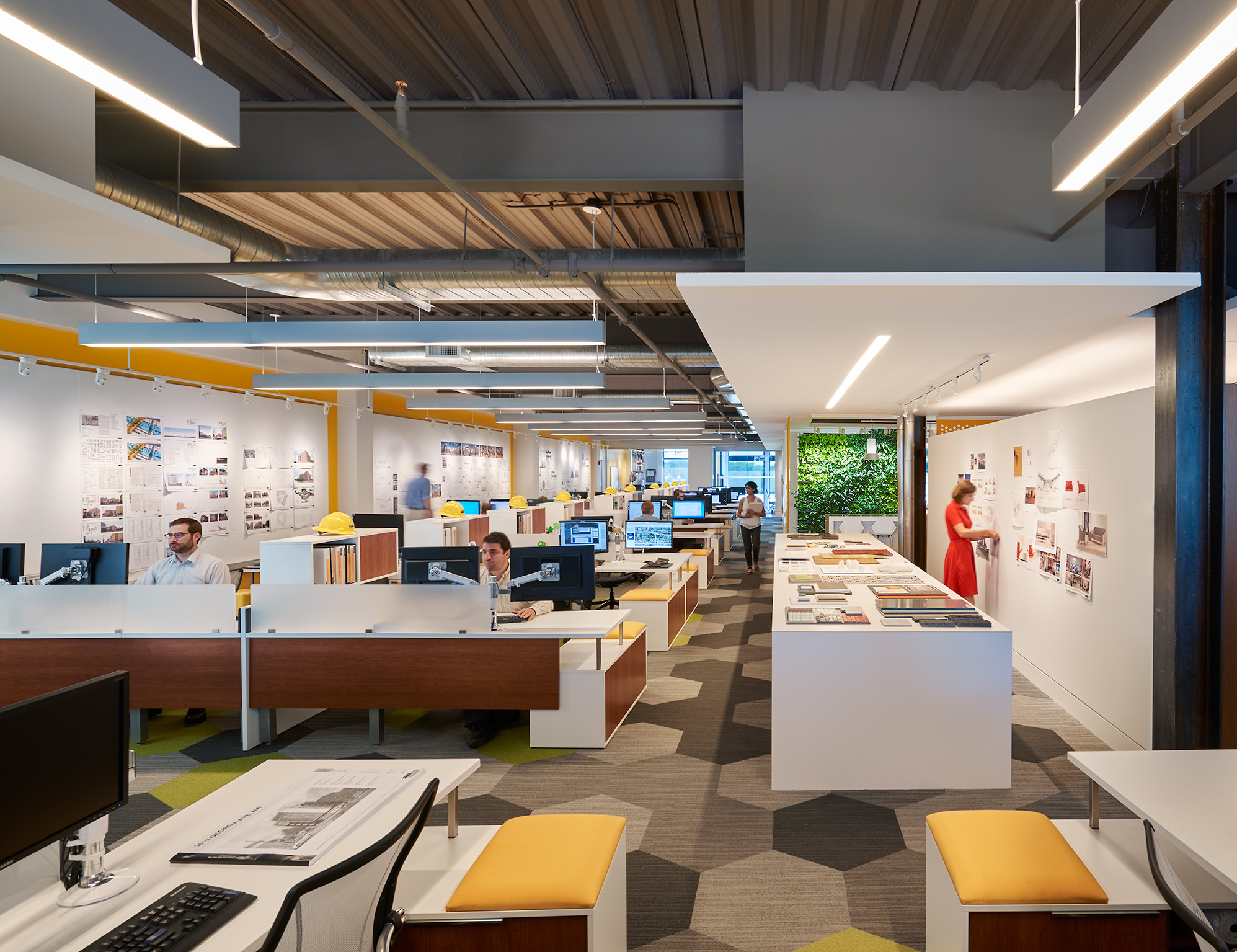GREENing the Workplace

Watch the exciting timelapse of our living green wall installation!

Bonstra | Haresign ARCHITECTS is enjoying the environmental, physical, and mental benefits of the new living green wall in our design studio.
We, as humans, spend on average 87% of our lives inside of buildings, much of which is spent at work. Bonstra | Haresign ARCHITECTS recognizes the importance of a healthy office environment for the well-being of its employees, and continually strives to improve and maintain these spaces.
One sound way to improve air quality, enhance visuals, as well as employee alertness and energy levels is by bringing nature inside of the building through living green walls. Over the past half century, a notable increase of urban dwellers has led to an increase in air pollution and loss of green spaces. Living green walls infuse office interiors with life-renewing greenery. They offer an inspirational and aesthetically intriguing natural boost to employee morale. The structures of living, breathing plant life create the “wow factor” so many designers seek while championing sustainability. The benefits of green walls are felt in our office every day.
Visual Impact and Location
Living green walls make a positive statement by creating inviting environments. They are as equally impressive in appearance as they are purveyors of good health; the plants in the walls work as a natural air-filtration system that building occupants can enjoy. Employees are greeted by a green lush environment while enjoying the soothing effects of being around an abundance of foliage. At Bonstra | Haresign ARCHITECTS, our green wall is located in the presentation area where we hold educational seminars, have internal meetings, and employees gather to enjoy lunch. Having this natural component elevates and energizes the space.
©Anice Hoachlander
WELL Building Performance and LEED Points
The impact of green walls are so established that they are included in a variety of building performance ratings for both human health and environmental wellbeing.
Green walls can boost your WELL building performance rating. This rating and certification system is built with a focus on human well-being. This performance-based system is constructed around seven core concepts to measure, certify, and monitor our working environments. These concepts lay the foundation for maximizing human health and wellness within the built environment. The WELL Building Standard’s core concepts include: Air, Water, Nourishment, Light, Fitness, Comfort, and Mind.
 2017 © International WELL Building Institute PBC
2017 © International WELL Building Institute PBC
Fitwel, designed by the Center for Active Design in partnership with the Centers for Disease Control (CDC) and General Services Administration, strives to support the design and improvement of spaces that promote equity and health across the spectrum of building types. Their seven categories of influence are impacting community health, reducing morbidity and absenteeism, supporting social equity for vulnerable populations, instill feelings of wellbeing, enhancing access to healthy foods, promote occupant safety, and increase physical activity. Indoor vegetation influence both the reducing morbidity and absenteeism and instilling feelings of well-being categories.
In addition, the LEED program (Leadership in Energy and Environmental Design), developed by the U.S. Green Building Council, is an internationally recognized green building certification system to help convert the design, operation and construction of buildings into eco-friendly properties. The installation of living green walls can earn buildings LEED points which, in turn, helps to increase a property’s value by creating a favorable perception of a structure with an improved carbon footprint.

©Anice Hoachlander
Bonstra | Haresign ARCHITECTS’ living green wall is located in the presentation area where we gather for lunch, collaboration, and meetings.
Improved Air Quality
Living green walls are natural air-filters, creating a cleaner, more invigorating work environment that will lead to better overall employee health and production. Office workers are often exposed to air toxins in their work environment such as formaldehyde, carbon monoxide, VOCs and benzene. In addition to filtering toxins, the living wall can also absorb the excess CO2 in the space, common in office areas due to the concentration of people, which can reduce individual’s ability to engage in strategic thinking or take initiative. Living green walls filter the compromised air while releasing oxygen into the workplace air, much like office plants but on a much larger scale.
Noise Level Reduction
One of the lesser known benefits of living green walls, the structures can reduce noise levels in buildings. Plants have been used, throughout the world, to reduce noise along roads and highways. Living green walls expand on this concept as vegetation ‘naturally’ blocks high frequency sounds while the supporting structure can help to diminish low frequency noise. Living green walls act as extra insulation with a layer of air between the plants and the wall. They also reduce noise levels by reflecting, refracting as well as absorbing acoustic energy.


